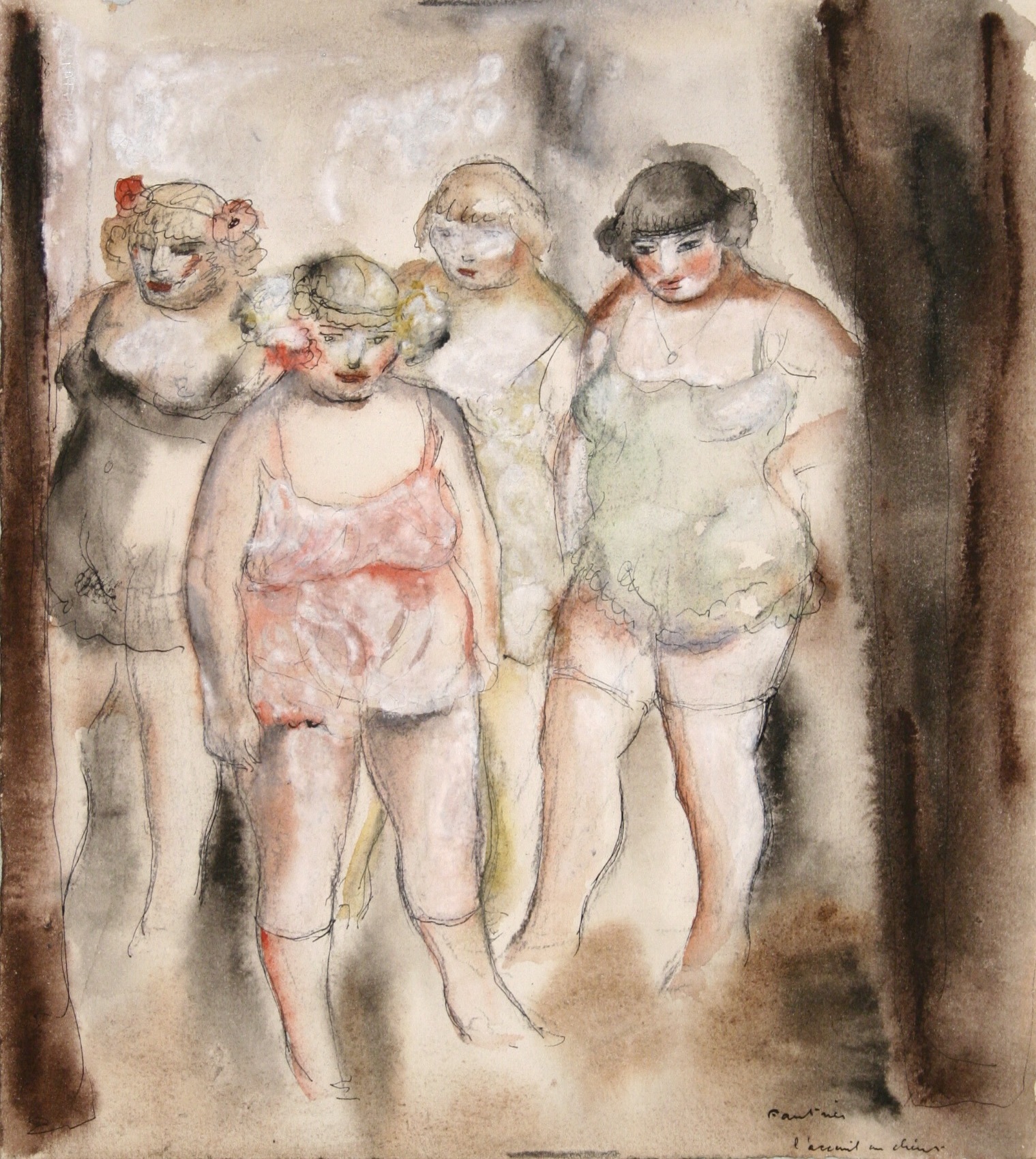Created in 1991 by Patrick Perrin, the Salon du Dessin prides itself on its ability to draw the most prestigious galleries specialized in prints, drawings and engravings, but also its ability to entice the public - connoisseurs and novices - to discover drawing from the 16th century to the modern day. Visitors are also treated to museum quality works. Sketches by Eugène Delacroix, red chalk studies by Tiepolo, black pencil pieces by Chavanne: coveted works that dealers have been seeking out for many years. Against the backdrop of a market already saturated with fairs of every shape and size, drawing, both historic and modern, always manages to succeed. So, how does it manage to stand out?

Jean Fautrier, Accueil aux clients 22,5 x 20 cm. Courtesy Galerie de la Présidence, Paris
Antique drawing, connoisseurs and amateurs welcome!
For those starting a collection, antique drawing can be intimidating. A considerable historical knowledge often seems necessary to enjoy and understand the work. Sylvie Tocci Prouté, the co-director of galerie Paul Prouté confirms, “at the gallery, some people veer towards modern and contemporary works over classical drawings because they are not ‘cultured’ in the most simple sense of the word. You can learn to love this style of drawing but often people are not initially drawn to it.” It is true that modern drawing is also more accessible to most. Benjamin Perronet, International director of the department of Modern and 19th-century drawing at Christie’s, claims that, “with classical drawing, the problem is when the rarefaction becomes more important than the piece. We no longer talk about the popularity of classical drawing. Its collectors are therefore obliged to take what’s left. Yet there is a gulf between modest drawings and the most expensive pieces. Fans wish to buy from the top end of the market right away. Drawings for €1,000 are becoming harder to acquire.”
The Salon du Dessin has found the balance between antique and modern drawing. As Louis de Bayser, president of the salon, confirms, modern drawings are easier to find and acquire on the antique market. The salon has modernized in order to be able to continue to offer something new each year. This year, the Bibliothèque Nationale de France has been invited by the Salon du Dessin to organize the exhibition “Architectural drawings from the 16th to 20th century,” featuring pieces by Androuet du Cerceau, Hardouin-Mansart, Robert de Cotte, Labrouste and Viollet-le-Duc. A word of advice from the newly converted: let yourself be led by the quality of the drawing!

Demanding collectors
When the market is saturated, the quality of the work (from whatever period) is of the utmost importance. Sylvie Prouté continues, “certain collectors are interested in several centuries, but often it is a question of quality. They will buy a quality drawing. Rare are those who are just interested in certain techniques, who would buy red-chalk works, or 17th-century pieces. The drawing world is more generalized than engravings.” The audience at drawing fairs is above all European and American, rarely engaging Asian collectors: “It’s a question of trend. There is a history and a tradition outside of Europe that veers away from works on paper, except maybe in Japan.” “History. Tradition”... Yet historic drawings are in no way outdated.
Quality works will always find a buyer with prices skyrocketing. Last January, at Sotheby’s New York, a chalk sketch by Watteau (1684-1721), Etude de deux soldats, l’un agenouillé, l’autre allongé, sold for $197,000 - a record for the artist. On March 25, Christie’s Paris offered 80 antique drawings from the collection of Professor I. Q. Van Regteren Altena, director of drawings and engravings at the Rijksmuseum; a quill drawing by Fra Bartolomeo (1472-1517) depicting Mary and her child and Mary with John the Baptist was estimated to fetch €100 to 150,000. The piece ended up going for €433,500!
An established relationship with drawing
A relationship with drawing can seem simpler and more efficient. “More so than with a painting, drawing allows for direct contact with the artist. The collector feels closer to a drawing. At the same time, most people who buy drawing also buy paintings,” explains Florence Chibret-Plaussu, Director of the Galerie de la Présidence, who is exhibiting a series of Jean Fautrier chalks on the theme of brothels at the Salon du Dessin this year. Gilles Fuchs, collector and founder of ADIAF confirms, “The sensibility is totally different with drawing. It is a medium that is more sensitive than canvas or wood. There is an intimacy that is established between the viewer and the subject.”
And what about contemporary drawing?
Contemporary drawing is certainly not to be neglected and is being showcased in depth this month at Drawing Now and DDessin. Eve de Medeiros, founder and director of DDessin, claims, “drawing is in the spotlight right now and the market is allocating an important place for it. It is an open door to the contemporary art market. It is a medium that expresses itself in an artistic way, yet is financially viable, too.” DDessin looks to bring to the forefront young artists and galleries who often don’t receive anywhere near as much visibility as they receive during a fair. Here one can start a collection with €200, and love-at-first sight encounters are encouraged. The enthusiasm that drawing manages to incite today is in fact due to the hard work of tenacious collectors like Daniel and Florence Guerlain, whose collection was presented at the Centre Pompidou in 2013. The Guerlains will also be present at the Salon du Dessin for the Prix de dessin prize, given on behalf of the Daniel & Florence Guerlain Foundation.









